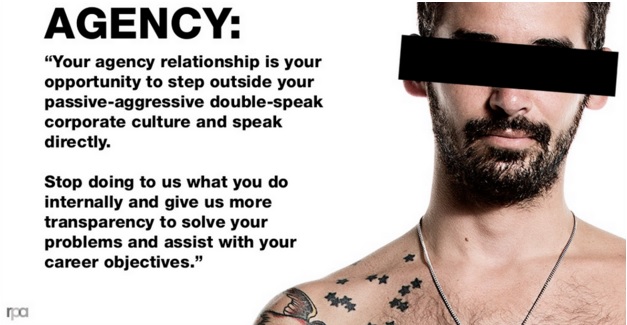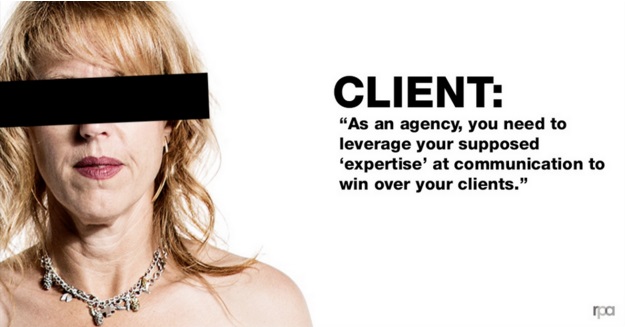Why Agency-Client Communication is a Bigger Problem Than You Think
Agency-client relationships are all about partnership. The relationship between an agency and client needs to be strong and healthy to survive the constant onslaught of project deadlines, meetings, and creative differences that arise throughout the working relationship. The stronger the relationship, the better the results.
According to a 2015 study by the Association of National Advertisers (ANA), seventy-four percent of clients who work with creative agencies believe agencies play an important role in driving their own success, and rely on long-term agency relationships to further their business goals.
For many agencies, these long-term client relationships are equally as important to success. Agencies often spend thousands of dollars each year developing and maintaining client relationships. Yet with all the effort spent on hiring experts, developing marketing strategies, hiring the right teams, and providing excellence service, developing a plan for good agency-client communication is often overlooked.
A good communication plan is essential to maintaining any successful business relationship. Cycles of poor communication can lead to dissatisfaction, failed projects, financial losses, and worse yet, loss of reputation in the industry. But because many agency-client interactions are more collaborative than other business – especially in the creative fields – effective communication is even more important, since communication often goes through multiple channels to multiple sources before projects are completed.
Many agencies run into issues of over or under-communicating with their clients – either communicating too little, leaving clients confused or worried about project deadlines, or communicating too much (or about the wrong things), overwhelming clients with too many details.
Reversely, clients often have a difficult time expressing their needs to agencies through the proper channels, leaving many agencies struggling to meet the demands placed on them.
While these breakdowns in communication can come across as merely annoying or “just part of the job,” they can be detrimental to the bottom line if not properly addressed.
The most common types of communication breakdowns
One of the biggest communication failures between agencies and clients is a lack of communication. This problem can also include a lack of useful information being processed between parties. If the agency forgets to respond to emails, leaves out critical information, or is too vague about project demands, for example, it can cause clients to feel they’re being ignored.
Clients will sometimes overcompensate for this perceived lack of communication by providing massive quantities of (often useless) information, which is not always helpful for the agency, as much of it will not be necessary to the task at hand. Agencies may respond to this information overload by ignoring pieces of information, which may cause clients to feel misheard or misrepresented. This vicious cycle leaves agencies feeling overwhelmed and clients feeling devalued.
On the reverse side, if agencies over-communicate, clients may feel overwhelmed and overworked and assume the agency is too incompetent to manage the project on their own. One example of communication overload is agencies placing a heavy reliance on email communication over more personal styles such as meetings or phone calls.
Phil Simon, author of Message Not Received, says that the average person receives 120 to 150 emails per day, making it extremely common for clients to misplace, delete, or forget to read their emails. When too much information comes across a digital platform, overload is more likely to happen, which can cause clients to disengage.
In worst cases, this disengagement can lead to entire projects being stalled. While constant communication is important for any development project, over-communication or communication about issues that aren’t essential to the needs of the moment can leave many clients feeling confused or overworked.
Having a strong communication plan in place is important to combatting these communication issues. Knowing when, where, how often, and to whom communications should be sent can alleviate the burden on clients and allow agencies to manage projects more competently.
Of course, communication plans only work when the relationship between an agency and client is already established. If there are breakdowns within the relationship, poor communication will only cause further problems. Some experts warn that poor communication within an agency-client relationship is actually a symptom of something far worse.
Poor communication is often a sign of deeper problems
In 2014, RPA and USA Today conducted an anonymous online survey of more than 140 agencies to better understand what makes successful agency-client relationships. In their report, The Naked Truth, they discovered that ninety-eight percent of agencies and clients agreed that trust was a major factor in maintaining relationships, but that poor communication was a major factor when there was a lack of trust.
Poor communication can be a sign of underlying trust issues between agencies and clients, and can play a major role in the dissolution of otherwise successful business relationships. If an agency struggles to connect with clients on a consistent basis, for example, it can create uncomfortable distance in the working relationship, resulting in unnecessary overreactions when smaller issues arise. 
If the client feels like the agency isn’t listening to their needs or has trouble getting those needs met on a consistent basis, they may either react with a desire for more communication (which the agency may not be able to fulfill) or they will slowly withdraw and look for alternative solutions.
Without first establishing the kind of trust that leads to healthy agency-client communication, tensions can build over time until one or both parties walk away from the relationship all together, resulting in financial and networking losses for both.
The good news is that trust can be built and protected by intentionally stewarding good communication patterns.
Three ways to promote trust through great communication
Since communication is a skill, it can be learned and improved through intentional practice. Strong communication skills may need to be relearned during the course of a relationship, especially if there have been patterns of poor communication in the past or a history of mistrust. Here are a few ways agencies can ensure they are maintaining healthy communication with their clients (and vice-versa).
Be consistent and reply quickly
If an agency has issues with slow or inconsistent communication, it can hinder workflow and create communication barriers. Replying to emails and phone calls as quickly as possible – or sending additional emails notifying clients when they can expect a reply – can go a long way in boosting confidence. Setting a 24-hour rule to responses (or faster if it’s an emergency) and sticking to it will help foster trust.
Adapt your communication styles
Misunderstandings are one of the most common communication problems for both agencies and clients. When a client has trouble interpreting the intentions of an agency, it can cause confusion and slow down the workflow, since additional messages are required for clarification. Making sure communications are well written, clear, and concise before sending will help eliminate that confusion. It can also be helpful to restate the main concerns at the end of an email, phone call, or meeting to ensure everything was properly communicated.
Be open and honest (but don’t overreact)
Being open and honest (but respectful) with clients can help build strong relationships and promote good communication. Being courteous and sincere but honest about perceived complications will create a safe environment for both parties when problems arise. When complications do occur, address them quickly and confidently without assigning blame. If the relationship is already shaky, overreaction can cause non-issues to escalate into impossibilities. Asking “Why,” “Why not,” and “What” questions will help clarify and refocus the discussion while calming fears that clients aren’t being heard.